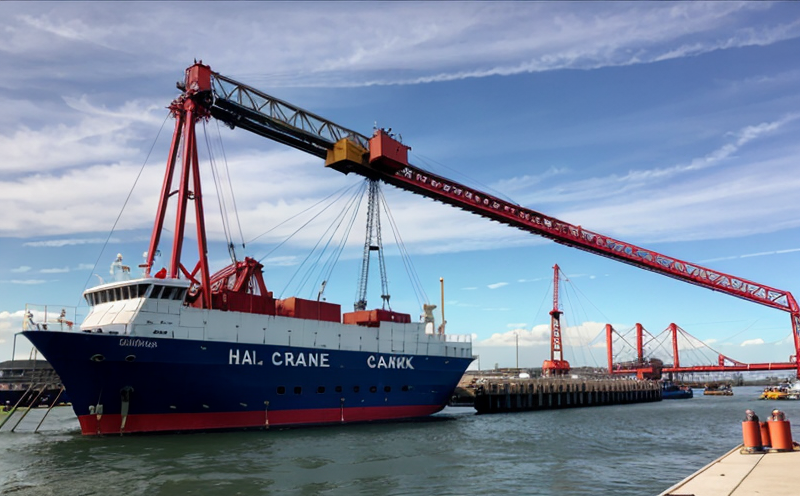Harbor crane inspection
The integrity and safety of harbor cranes are paramount in ensuring efficient operations within ports and shipping terminals. Harbor cranes, designed for heavy lifting and material handling, must meet stringent standards to prevent accidents that could lead to significant property damage or loss of life.
Crane inspections are critical not only for compliance with regulatory requirements but also for maintaining the reliability and longevity of these large structures. This process involves a thorough examination of various components including gears, motors, brakes, and lifting devices. The inspection must adhere to international standards such as ISO 13435:2016 for lifting equipment.
The importance of regular inspections cannot be overstated; they help in identifying potential failures before they escalate into major issues. By conducting these checks, operators can ensure that the cranes are operating within safe parameters and meet all regulatory requirements. This proactive approach is essential for maintaining a safe work environment and minimizing downtime.
| Application Example | Description |
|---|---|
| Port and Shipping Terminal Operations | Cranes in ports are inspected to ensure they can handle heavy loads efficiently without compromising safety. Regular checks help identify wear and tear, enabling timely maintenance. |
| New Construction Projects | Before commissioning new harbor cranes, inspections are conducted to verify compliance with construction standards and to ensure the equipment is fit for purpose. |
| Airports and Cargo Handling Facilities | Cranes used in cargo handling at airports need regular checks to maintain safety and efficiency. This ensures that goods can be moved accurately and safely, reducing risks of accidents. |
Why It Matters
The safety and operational reliability of harbor cranes are directly linked to the well-being of workers, the efficiency of port operations, and the integrity of cargo handling. Accidents involving harbor cranes can lead to severe injuries or fatalities, which underscores the necessity for rigorous inspection processes.
Compliance with regulatory standards is not just a legal requirement but also an operational necessity. Non-compliance can result in fines, reputational damage, and even legal action. Moreover, ensuring that cranes are kept in optimal condition reduces maintenance costs by identifying issues early on, thus avoiding costly repairs or replacements.
The economic impact of accidents is significant; downtime due to equipment failure translates into lost productivity. Regular inspections help prevent such disruptions, thereby enhancing operational efficiency and reducing the overall cost of port and shipping operations.
Competitive Advantage and Market Impact
- Enhanced Safety: By ensuring that cranes are in optimal condition, operators can significantly reduce the risk of accidents, thereby enhancing their reputation.
- Regulatory Compliance: Adherence to international standards ensures compliance with local regulations, avoiding potential legal issues and associated costs.
Operators who invest in comprehensive inspection services not only meet regulatory requirements but also set a benchmark for excellence. This can lead to increased market share as clients appreciate the safety measures taken by such operators. Furthermore, maintaining high standards of maintenance and inspection can differentiate these companies from their competitors, providing a competitive edge.
Use Cases and Application Examples
- Port Authorities: Regular inspections are conducted to ensure that cranes comply with safety regulations and can handle the heavy lifting demands of port operations.
- Cargo Handling Companies: Inspections help in identifying any wear or tear, ensuring that equipment is fit for purpose before critical cargo handling tasks.





